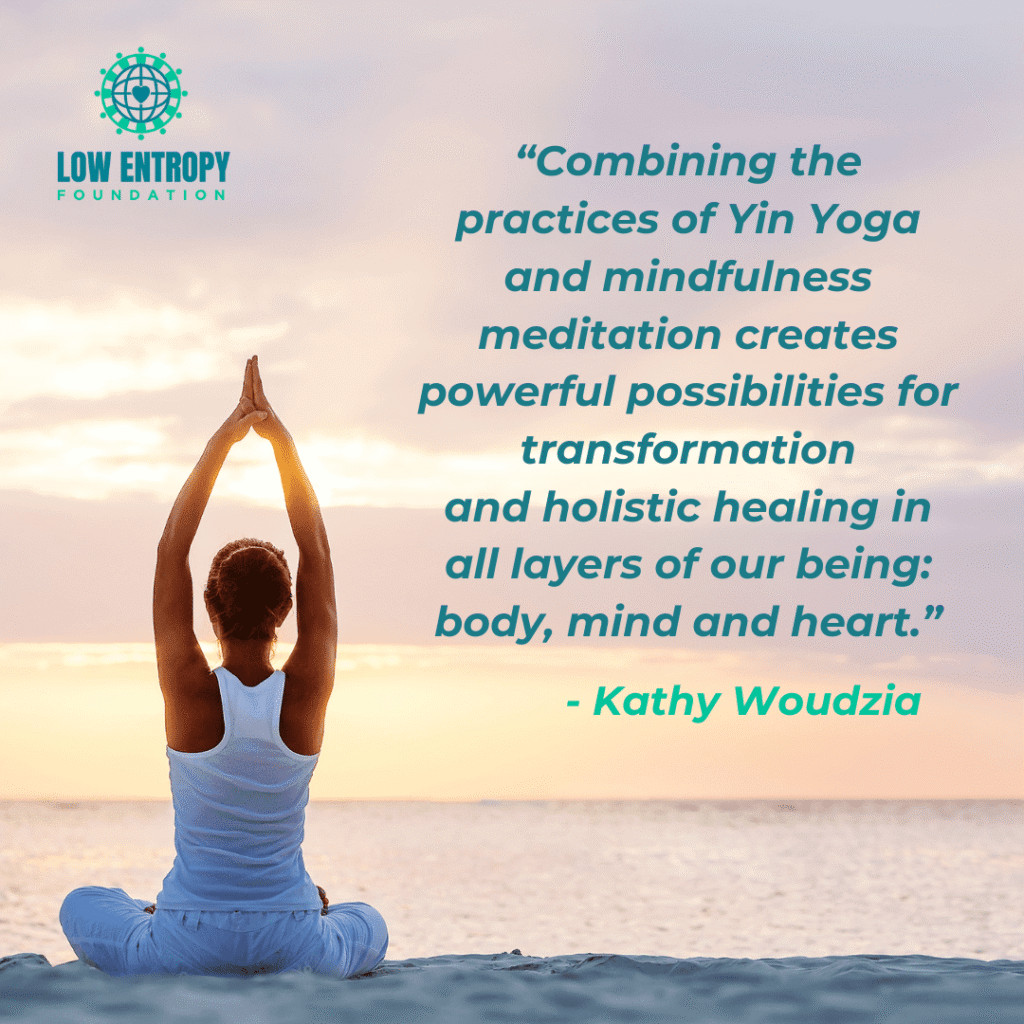Reason to Roam
Simin Ghaffari (she/her/hers), Low Entropy Administrative Assistant Walking has always been a great form of exercise, and it is a great way to boost your physical and mental well-being. Walking has helped me relieve my stress and find peace during a pandemic. When I was 11 years old I read a book, a […]
A Quiet Fix: Holistic Healing through Yin Yoga

What started as a quest for increased flexibility led Low Entropy Volunteer Writer Kathy Woudzia to emotional sanctuary via breath and meditation. As a person living alone, I have had a difficult time coping with the social isolation associated with COVID. Before January 2020, I spent my time raising a family and all duties that […]
